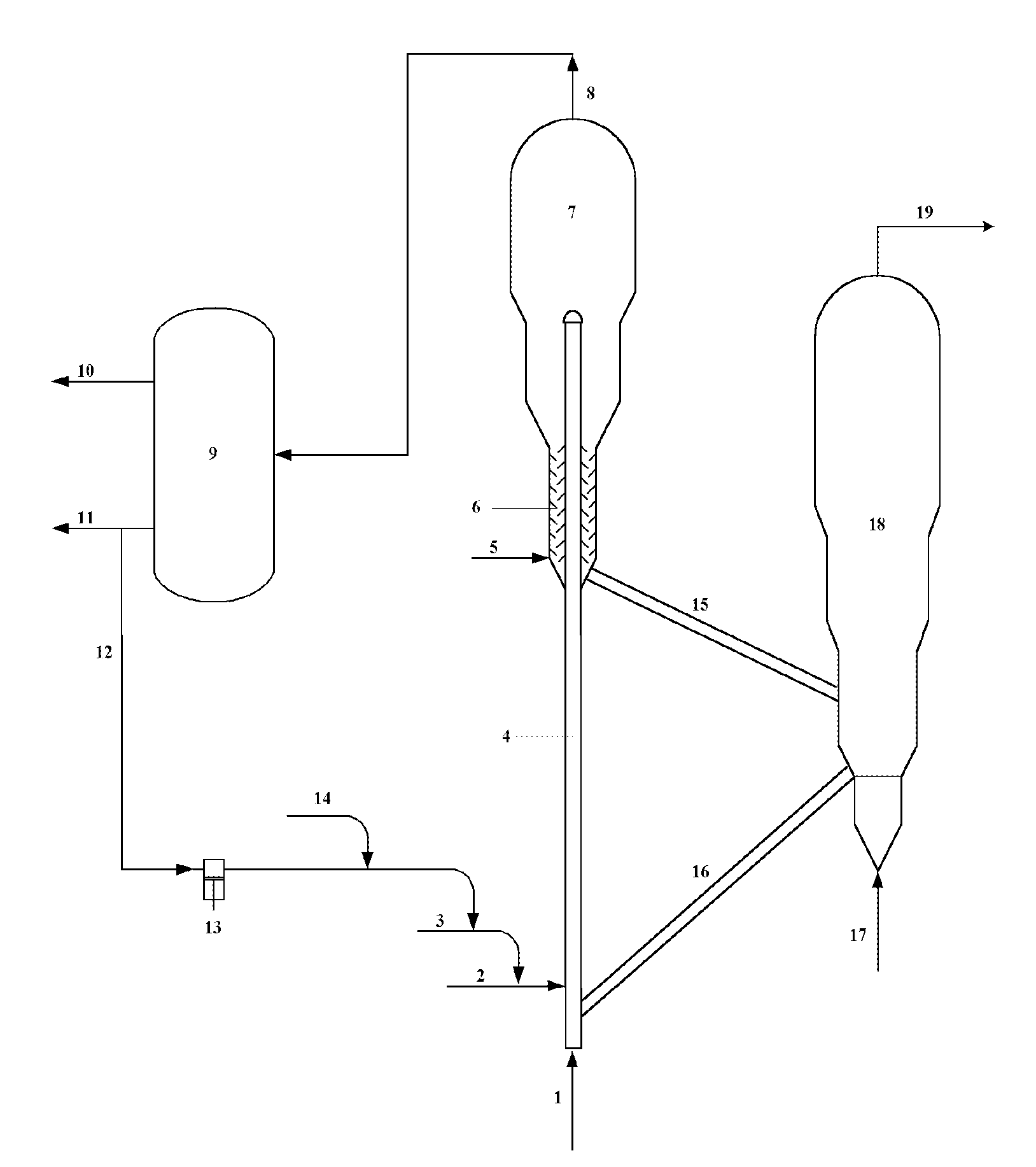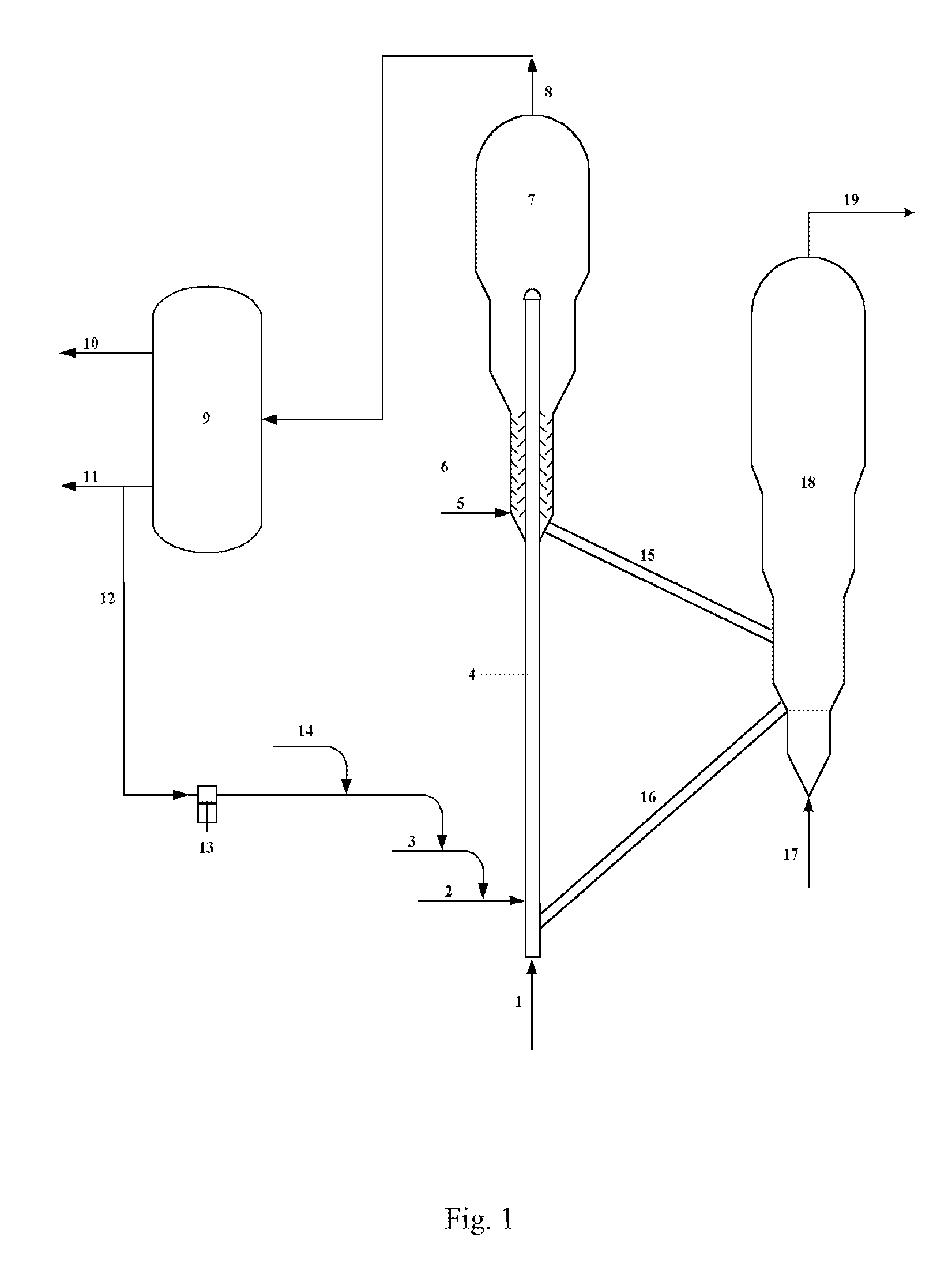Catalytic Conversion Method Of Increasing The Yield Of Lower Olefin
a technology of hydrocarbon oil and conversion method, which is applied in the direction of physical/chemical process catalysts, bulk chemical production, organic chemistry, etc., can solve the problems of reducing the total reducing the profit of the process, and reducing so as to increase the yield of light olefins
- Summary
- Abstract
- Description
- Claims
- Application Information
AI Technical Summary
Benefits of technology
Problems solved by technology
Method used
Image
Examples
example 1
[0037]This example shows the catalytic reactivity of the light olefin in a bench fixed fluidized bed reactor using carbon monoxide as the inhibitor according to the process of the present invention.
[0038]The experiment was conducted in a batch operation mode with the feedstock A as the feedstock. The feedstock, the inhibitor and the atomizing steam were heated by a preheating furnace to about 350° C. and then fed to the bottom of the fluidized bed reactor via the feed nozzle, coming into contact with the hot catalyst to carry out the catalytic conversion reaction. The reactant vapor and the inhibitor were separated from the coke deposited catalyst and then entered the product separation system, and the reactant vapor was further separated into a gas product and a liquid product. After the reaction was finished, the stripping step was conducted to strip out the hydrocarbon products adsorbed on the spent catalyst by steam. After stripping, an oxygen-containing gas was introduced into ...
example 1 ′
Example 1′
[0039]This example shows the catalytic reactivity of the light olefin in the case of no inhibitor being injected during the reaction, aiming to further demonstrate the practical effect of the present invention. This example has a different experiment phenomenon discovered by the inventors in the laboratory from those as known by the conventional knowledge.
[0040]The feedstock A was used as the feedstock in the experiment. The used reactor, the main experiment steps and other operating conditions were the same as those of Example 1. The main operating conditions and results are listed in Table 2.
[0041]It can be seen from the comparison between the experiment results of Example 1 and Example 1′ in Table 2 that propylene had a considerable high reactivity under the conventional reaction conditions for producing light olefins by the catalytic conversion and the conversion of propylene is as high as 55.19 wt %. This was quite different from the knowledge of most researchers. The...
example 2
[0042]The present example shows the catalytic reactivity of the light olefin in a bench fixed fluidized bed reactor using hydrogen as the inhibitor according to the process of the present invention.
[0043]The feedstock A was used as the feedstock in the experiment. The used reactor and the main experiment steps were the same as those of Example 1. The main operating conditions and results are listed in Table 2.
PUM
| Property | Measurement | Unit |
|---|---|---|
| Temperature | aaaaa | aaaaa |
| Temperature | aaaaa | aaaaa |
| Time | aaaaa | aaaaa |
Abstract
Description
Claims
Application Information
 Login to View More
Login to View More - R&D
- Intellectual Property
- Life Sciences
- Materials
- Tech Scout
- Unparalleled Data Quality
- Higher Quality Content
- 60% Fewer Hallucinations
Browse by: Latest US Patents, China's latest patents, Technical Efficacy Thesaurus, Application Domain, Technology Topic, Popular Technical Reports.
© 2025 PatSnap. All rights reserved.Legal|Privacy policy|Modern Slavery Act Transparency Statement|Sitemap|About US| Contact US: help@patsnap.com



